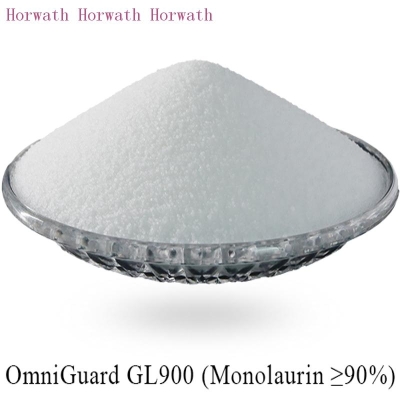Three hidden dangers of aquaculture in China
-
Last Update: 2002-08-16
-
Source: Internet
-
Author: User
Search more information of high quality chemicals, good prices and reliable suppliers, visit
www.echemi.com
Introduction: Zhang Fusui, academician of Chinese Academy of engineering, researcher of Institute of Oceanography, Chinese Academy of Sciences Aquaculture organisms in China are basically wild type without genetic improvement in the process of domestication Therefore, in addition to maintaining the strong adaptability of wild type to environmental temperature and other changes, it is more manifested as the inadaptability to the changes of aquaculture environment, such as density changes, operating conditions, pathogen damage and deteriorating water environment Because the germplasm of wild-type species in mariculture is difficult to adapt to the deteriorating environment, it is easy to die in large scale after long-term intensive cultivation In addition, after several generations of breeding, some of the wild-type population may be sensitive to some environment (pathogen), which is easy to cause death and other individual deaths This is the first hidden danger of aquaculture in China - germplasm problem In addition, in freshwater aquaculture, grass carp and other diseases are serious due to environmental degradation In the traditional culture of prawn and seashore, the single problem of culture species or groups has a long history At present, the unreasonable structure of aquaculture species in different ecological types of sea areas is very common in China's mariculture industry For example, if a certain sea area is suitable for a certain kind of biological aquaculture, its aquaculture biomass will seriously exceed the environmental load and carry out predatory aquaculture Intensive cultivation with single long-term structure in some sea areas makes the energy and material of the ecosystem poor due to overspending, resulting in disorder of circulation process and ecological imbalance, resulting in abnormal occurrence of some pollution, red tide and pathogenic organisms Moreover, due to the low diversity of biological population in the system, short food chain and high energy conversion rate, the stability of the ecosystem is poor, which is very easy to cause diseases Occurrence and popularity This is the second hidden danger of aquaculture in China - disease problem The third is environmental issues According to statistics, the amount of waste water directly into the sea in China is up to 8 billion tons every year In addition, a large number of Agricultural Sewage rich in organic matter, inorganic nitrogen, phosphorus and organic pesticides also flows into inland and offshore waters along with the river, resulting in the deterioration of aquaculture water quality, seriously affecting the survival and growth of aquaculture species In addition to the entry of exogenous pollutants, the impact of aquaculture itself on the ecological environment of aquaculture waters can not be ignored A large number of newly added breeding facilities have changed the flow field in the breeding area and its adjacent waters Moreover, due to the barrier effect of the breeding facilities, the flow rate has been reduced, which has affected the input of nutrients and the output of pollutants As a result, the land-based pollutants can not be diluted and diffused in time and remain in the breeding waters Due to the accumulation and mineralization of a large number of wastes and other organic matters in the production and processing process, the sea floor and the pool bottom are raised and the water depth becomes shallow, which not only reduces the use function of the water area, but also becomes the source of secondary pollution In addition, the dissolution of organic matter of plant species, the discharge of artificial residual bait and metabolites in the process of animal species breeding all cause harm to the water environment The reason for the above phenomenon is the lack of systematic basic theory and high-tech research At present, the theory and technology of aquaculture in China can not meet the needs of actual production The phenomenon that scientific research lags behind production has seriously affected the development of aquaculture in China For many years, the researchers in our country lack of real breakthrough in the theory and technology of mariculture, which also reflects the lack of attention and investment of the state and relevant departments on the basic theory of mariculture Secondly, it lacks the strategic consciousness of overall development and utilization Unreasonable exploitation intensifies the impact and damage of human activities on the resources and environment of lakes, estuaries and coastal zones In recent years, the serious decline of benthic shellfish resources in China is closely related to the unreasonable development of coastal zone and the destruction of the habitats on which benthic shellfish depend for survival and reproduction For example, the use of expensive surface water and groundwater for fish farming in arid areas has achieved short-term economic benefits, but it has also led to the depletion of groundwater, resulting in local ground subsidence, resulting in seawater recharge, with unimaginable consequences In the new century, China's aquaculture industry will develop towards ecological aquaculture and engineering aquaculture Its theoretical basis is to use modern biological theory and biological and engineering technology to coordinate the relationship between breeding organisms and breeding environment, so as to achieve mutual friendliness, sustainable and efficient The overall goal is: to achieve good breeding of aquaculture organisms, ecological engineering of aquaculture technology, high-quality and high-value aquaculture products, and clean aquaculture environment, and ultimately achieve sustainable development of aquaculture.
This article is an English version of an article which is originally in the Chinese language on echemi.com and is provided for information purposes only.
This website makes no representation or warranty of any kind, either expressed or implied, as to the accuracy, completeness ownership or reliability of
the article or any translations thereof. If you have any concerns or complaints relating to the article, please send an email, providing a detailed
description of the concern or complaint, to
service@echemi.com. A staff member will contact you within 5 working days. Once verified, infringing content
will be removed immediately.







